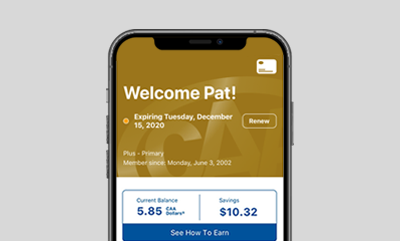BCAA’s top tips to help you avoid BC’s most common winter driving problems
Calls for BCAA Roadside Assistance can spike up by 50% during the winter months. Here are some of the most common incidents we see when we arrive on the scene, along with a few tips to help you stay safe and problem free.
The most common calls for BCAA Road Assistance during winter
1. A dead battery.
This is one of the most common problems we’re called on for help but can also be one of the easiest to avoid.
- Get a vehicle winter check-up with an automotive professional you trust. BCAA Auto Service Centre has winter maintenance packages starting at $58, including checking your battery as part of a 42-point inspection.
- If your battery needs a boost or replacement, BCAA Auto Service offers Members contact-free Battery Service wherever your vehicle is parked*.
- Learn more by visiting our top tips for proper car battery care blog.
2. Tires are flat, underinflated or in poor condition.
Your tires are the only things keeping you and your car connected to the road. You want them to be properly inflated and in their best condition to give you better traction.
- Inspect your tires often, especially when the weather fluctuates. Air pressure decreases in cold weather, and tires can become underinflated more often.
- Look out for low tread depth and check for bulges or cracks.
3. Vehicle sliding off the road because they don’t have winter tires, or the tire treads are worn.
If you don’t have tires specifically designed for snow, ice and cold, slippery conditions, your car won’t get you far in the winter months.
- Invest in winter tires that meet BC’s winter tire laws. This is a safe option for all winter conditions, not just snow.
- Don’t mix tires. Having four matching, properly inflated winter tires will give better traction.
- Even winter tires must have enough tread. In BC, winter tires must have a tread depth of at least 3.5 millimetres in order to meet the province’s winter tire laws.
- Visit our BCAA winter tire guide to learn more.
4. Vehicle couldn’t stop in time and slid into something or off the road.
In addition to having proper winter tires, it’s important to adjust your driving to match the conditions.
- Drive at slower speeds and leave more room between you and the car ahead. Speed limits are meant for ideal road conditions.
- Give yourself extra time to get to your destination. This helps prevent the temptation to drive too fast.
5. Vehicle stuck on a hill, unplowed street, un-shovelled driveway or in a busy parking lot.
We see these incidents a lot! After finding out how drivers get into these circumstances, here are ways to avoid these unsafe situations.
- Shovel your driveway each time it snows. This helps prevent ice from forming and building up.
- Come up with a different route that keeps you on main roads. Hills (even those with small inclines), congested streets, intersections with no left-turning light and narrow streets are even more challenging during winter.
- Be realistic about your winter driving skills and what your vehicle is capable of. Think about other safe options rather than just ‘going for it’, such as turning around to go another way, waiting until the problem has cleared or pulling over to park and leave your car.
- Understand winter road conditions. Streets and hills are slippery overall, side streets are narrower due to plowed snow along the curb, driving through deep water can damage your car, and parking lots will be more difficult to maneuver within.
Note: BCAA always responds to calls as quickly as possible; however, during extreme conditions BCAA will respond on a priority basis, providing service first to those Members whose vehicles are blocking roadways or posing a threat to personal or public safety. Your patience and understanding under these circumstances are appreciated.
Know when not to drive
When conditions get bad, consider staying indoors. If you do have the leave the house:
- Check weather and road reports before you leave. Don’t drive if the weather is bad or wait until the weather and road conditions improve.
- Take precautions before you drive: Clear snow and ice from the roof of your car, windows and lights. Defog all windows before you head out.
- Always carry winter driving emergency items in your car. Having some simple winter driving tools can come in handy to get you out of a minor situation or in case you become stranded and need to wait for help. You can start off with a ready-made emergency survival kit (BCAA Members save 20% on kits from F.A.S.T.—First Aid and Survival Technologies Limited) and then add winter driving-related items found on BCAA’s list of essential winter items to carry in your car.
- If you don’t feel comfortable behind the wheel, don’t risk it. Plan for other transportation such as transit, professional drivers like taxis or ride with a more experienced driver that you know.
In case of the unexpected, BCAA is only a click or call away to help keep you moving
For faster access to roadside assistance, submit your request using the BCAA Mobile App or online at bcaa.com (and click NEED ROADSIDE ASSISTANCE button). You can also call us at 1.888.268.2222 (1.888.268.BCAA) or dial *222 on your cell phone.
Not a Member yet? Become a Member today at bcaa.com for less than $8 per month.
*BCAA Battery Service availability varies depending on vehicle make and model, and is limited to service areas as outlined at bcaa.com/batteryservice.







